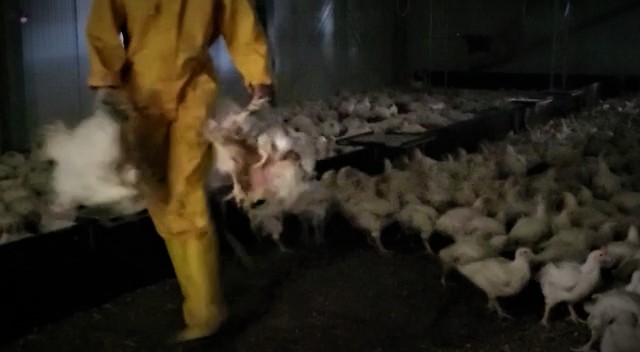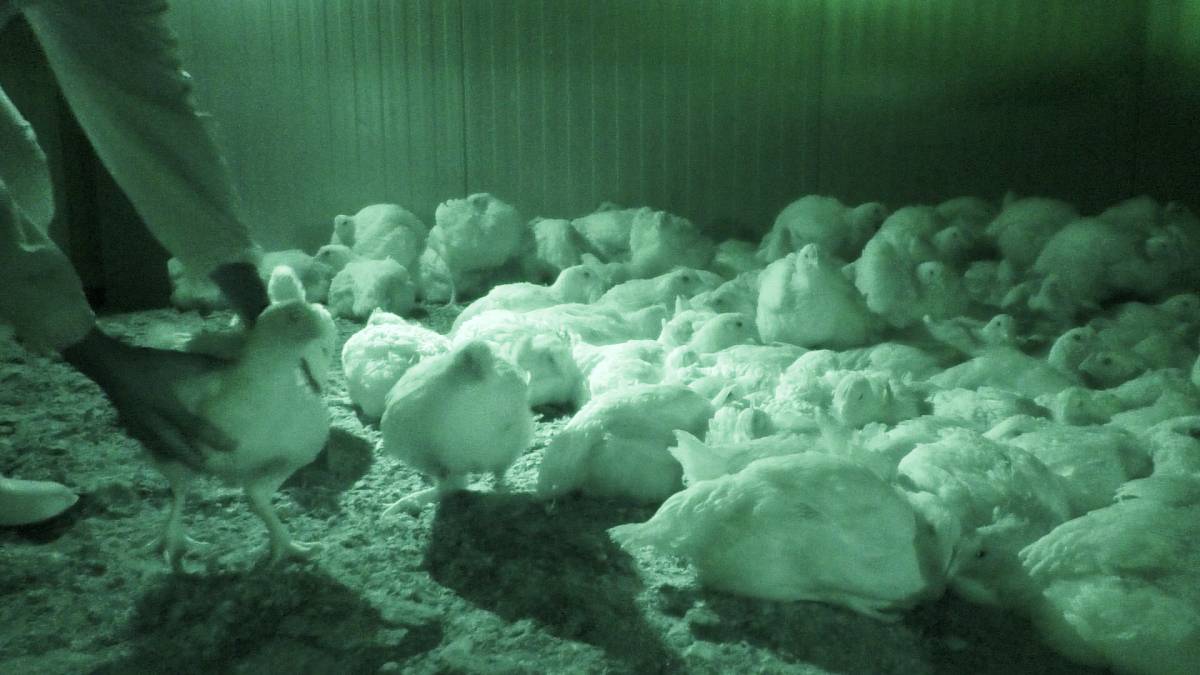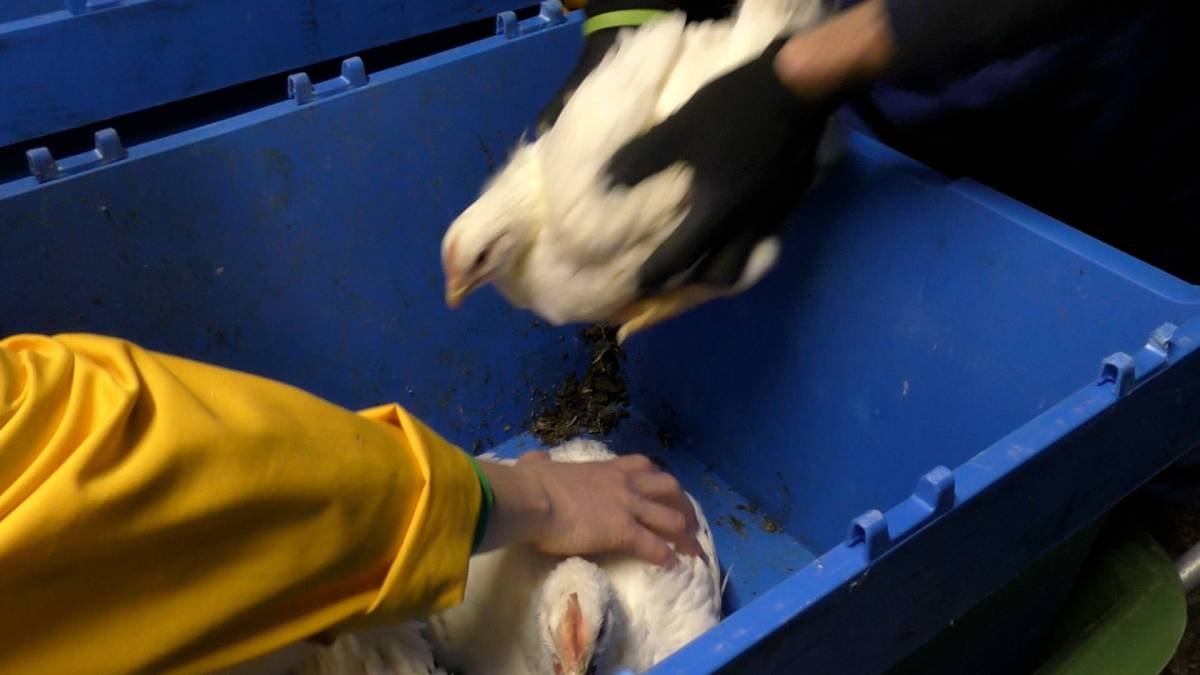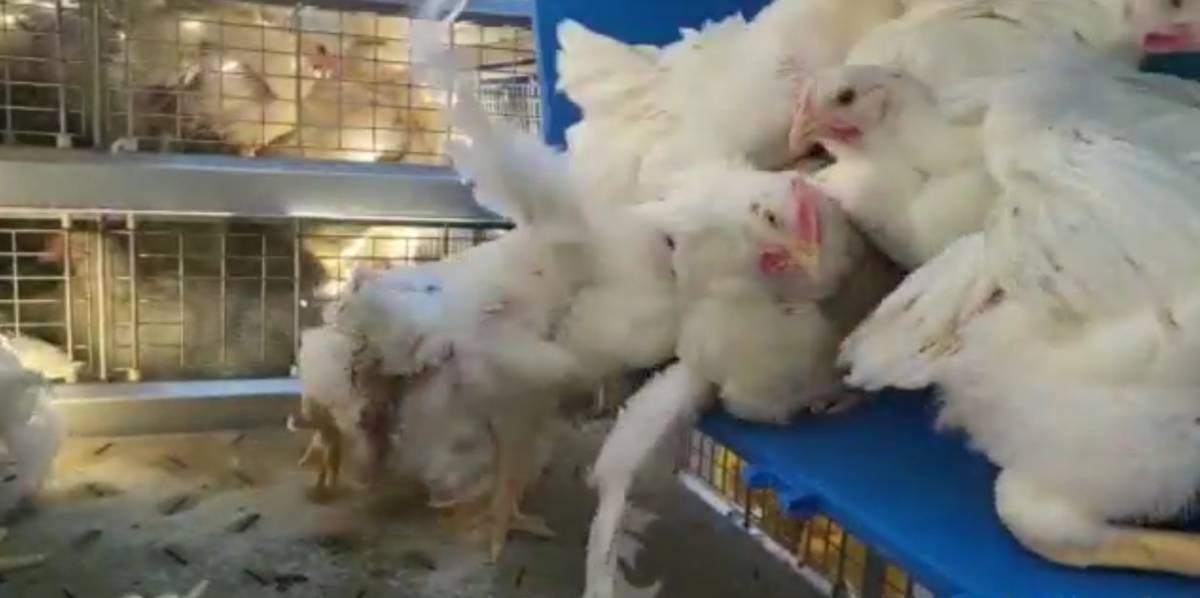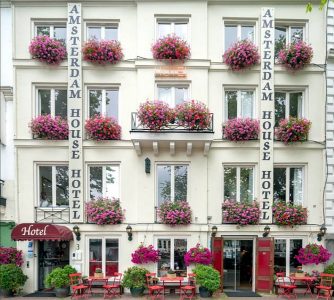Today Eyes on Animals observed the catching and loading of broilers at the Aeres MBO school in Barneveld (NL). The catching and loading was part of a field-study of Aeres comparing two different catching methods: the traditional catching method (holding birds upside down by one leg) and an alternative method. Aeres calls this alternative method the ‘upright method’; however, this is not valid. The “upright method” involves gently holding birds upright at all times, never hanging them upside down or letting them fall. As the broilers in their “ upright” study are not being kept upright during loading, the study is not a valid comparison so far between upright and traditional catching.
In their study Aeres caught and loaded 5 flocks in total (including today), each flock consisted of 1,000 broilers. Today for the first time Eyes on Animals was present while 500 birds were caught and loaded in a traditional (upside down) way and 500 in the alternative way. Before catching and loading Eyes on Animals gave a short presentation to the catchers on chicken-welfare and catching/loading techniques.
Today we observed that the Aeres field study – the way it has been practiced until today – does not give valid findings. Not only because the outcomes are not significant (the research sample is too small), but also because the broilers are being exposed to additional procedures that are highly stressful (strongly impacting the results) and they do not perform the ‘upright method’ as it is intended to be. The upright method means that birds are kept in an upright position during the whole process and are handled with utmost care. However, during the Aeres field-study, after being caught, birds were loaded in plastic containers (8 birds per container) to be weighed and then dumped out of the containers, left to slide or fall out into the transport containers. This procedure was so stressful, it nullifies all the benefits of the gentle upright catching. This tilting is likely also the main reason injuries were being found afterwards in both groups of birds for each trial.
Articles that appeared in the media about their study so far, such as the article in the trade journal “Pluimveeweb”, are therefore not accurate at all. The article in the Pluimveeweb even titled their article with a totally fake title called “catching upright causes more injuries”.
After a serious conversation with the researchers at Aeres about these flaws, Aeres agreed on phasing out the live tilting of birds, in order to get reliable results from their study. This means that during the next barn-depletion, the broilers will be placed directly in the transport containers in the correct gentle upright way instead of being dumped out of plastic containers. Aeres will also start measuring behavioral stress-signals in their study, such as wing flapping, uprighting of their head and vocalizations. They agreed with us that catching-injuries alone are not enough to properly determine which catching method is the best for the welfare of the birds. If a bird it not injured, he or she could have still experienced extreme fear and panic. This too, should be taken into account.
In the Dutch version of this article a more detailed list of our concerns and recommendations can be read >>
